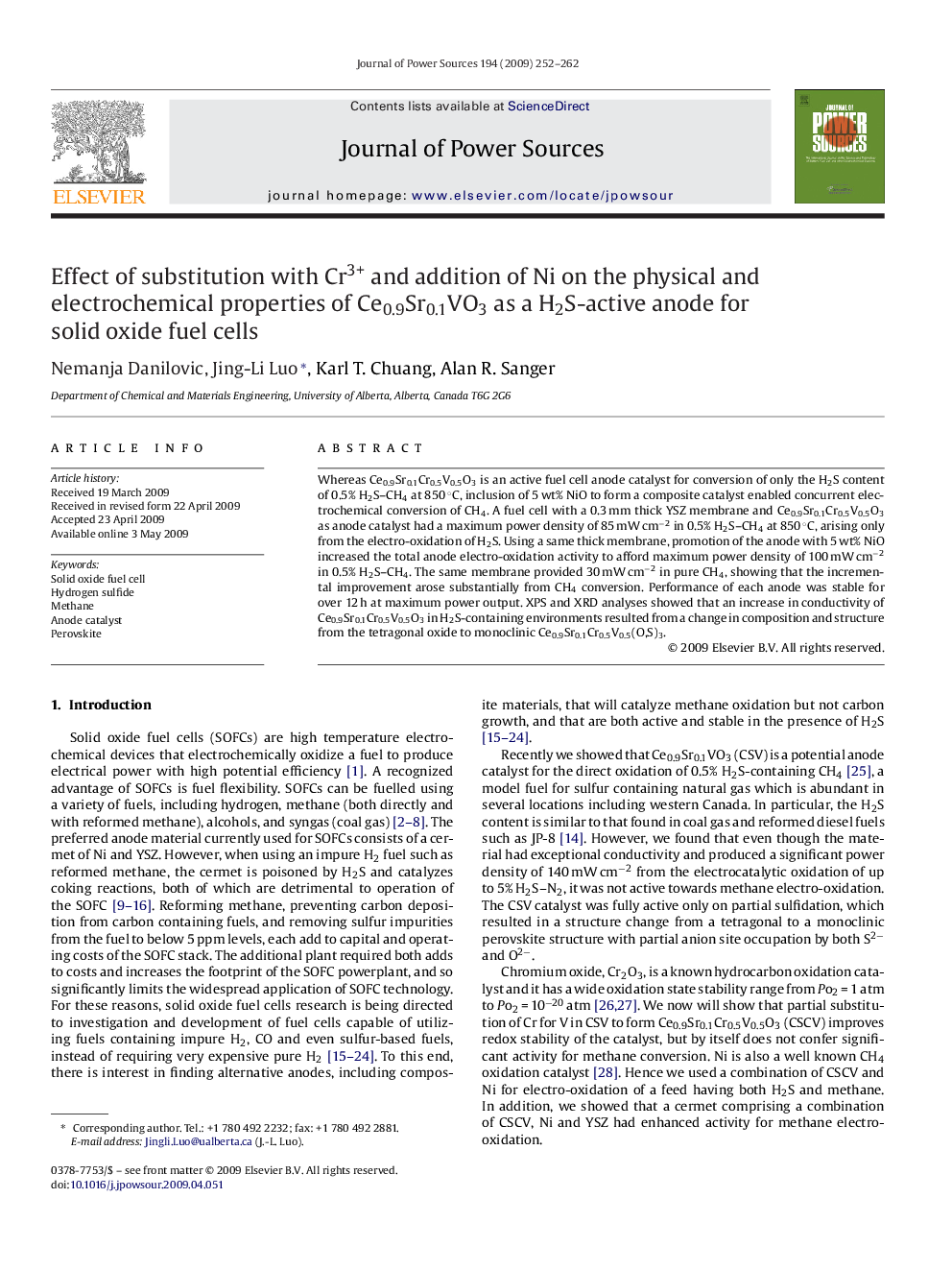| Article ID | Journal | Published Year | Pages | File Type |
|---|---|---|---|---|
| 1289841 | Journal of Power Sources | 2009 | 11 Pages |
Whereas Ce0.9Sr0.1Cr0.5V0.5O3 is an active fuel cell anode catalyst for conversion of only the H2S content of 0.5% H2S–CH4 at 850 °C, inclusion of 5 wt% NiO to form a composite catalyst enabled concurrent electrochemical conversion of CH4. A fuel cell with a 0.3 mm thick YSZ membrane and Ce0.9Sr0.1Cr0.5V0.5O3 as anode catalyst had a maximum power density of 85 mW cm−2 in 0.5% H2S–CH4 at 850 °C, arising only from the electro-oxidation of H2S. Using a same thick membrane, promotion of the anode with 5 wt% NiO increased the total anode electro-oxidation activity to afford maximum power density of 100 mW cm−2 in 0.5% H2S–CH4. The same membrane provided 30 mW cm−2 in pure CH4, showing that the incremental improvement arose substantially from CH4 conversion. Performance of each anode was stable for over 12 h at maximum power output. XPS and XRD analyses showed that an increase in conductivity of Ce0.9Sr0.1Cr0.5V0.5O3 in H2S-containing environments resulted from a change in composition and structure from the tetragonal oxide to monoclinic Ce0.9Sr0.1Cr0.5V0.5(O,S)3.
